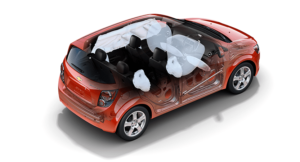Our brain can have endless visions, thoughts, and perceptions. It uses all of those to create a unique world for us. What you choose to wear, like, do, mingle with, and so on results from what your brain tells you is best. It is an amazing and complex organ that we still do not fully understand.
Your brain can also make a decision in just 100 milliseconds, causing your body to react. A very complex web of connections within the brain, nervous system, and senses suddenly become active to preserve your physical body. The fact that this all happens due to a chemical change within our body is just fascinating.

These split-second decisions are survival reactions. But there are several ways you can prepare yourself for these intense situations. Preparing your body can help you make better decisions at the 500-millisecond mark and after reviewing the data for any critical endeavor. Since chemistry seems to be the primary source of activation, you need to pay attention to what you eat. This basic need alters our body in many more ways than you may think.
I’m no doctor, but I can tell within twenty-four hours of eating if something isn’t sitting right. I can feel its effects on my body, attention level, and mood. And if I am not in a good mood, my decisions may not be the best either. A lot of athletes now practice reaction time. They train their eyes to gather more visual snapshots and analyze their surroundings for a faster response. These exercises improve the odds of doing what they must do right the first time.
Subjecting yourself to challenging situations also helps prepare your mind. If you face a difficult circumstance, you must embrace it and decide how to proceed. After a few failed attempts, your mind will learn to make a new decision (for its survival). In extreme circumstances, you may even experience a slow-motion effect. Everything slows down in time, and you can go through a series of options or decisions that’ll affect the situation’s outcome.
I recently had one of those slow-motion moments while I was traveling at 100 mph, racing. It started when a fellow competitor made the wrong split-second decision. When I saw his green car enter my peripheral vision, I knew something was about to happen. I watched as his speed exceeded the grip of his tires and knew he would’ve needed to steer his car into the corner to counteract it. But in this case, his bravery couldn’t overcome the physics of the situation.
His wheels locked up and started smoking on the asphalt, and I watched in slow motion. Without the ability to turn, he was going to hit one of the other two cars next to me. I wondered which direction they would go and thought to myself, “What options do I have?” I could go to the right side, into the dirt, and possibly spin myself out of control. I could go to the left if the inertia and gravity would take all the cars off the track so I could turn the corner. Or I could continue straight into a barrier and crash myself. I waited for the impact to see if there were more options. The effect between those cars catapulted one right in front of me, about six feet above the ground.
As the car landed upside down, I was able to downshift and reduce speed. I saw my competitor’s rollbar give out and watched his helmet hit the track hard. Part of the man’s body came out of the car on the impact, and it dragged on the asphalt for what seemed an eternity. Then it looked like he went numb, and he was unconscious from then on. While hard on the brakes and still traveling at 40 feet per second, I thought about his injuries and how we would get him out of the car without hurting him. I saw gasoline pouring from the upside-down car and only two corner workers near us. I thought of other vehicles coming behind at speed and how to protect this unconscious man. Furthermore, I thought about how I needed to ensure I and the one-off car I was driving were safe.
All this took place in less than 2 seconds. From the time I saw the speedy green car until we both stopped in the sand trap. How the brain is capable of assessing the situation, and looking at the options, while at the same time still physically controlling the car, is indeed a mystery.
But off-brain chemistry and a lack of daily exercise can contribute to a miscommunication between your internal systems. Therefore, it is essential to understand that to improve our decision-making, regardless of how fast that answer needs to be, we must also train our brains. Without a healthy head, it is impossible to make split decisions.



